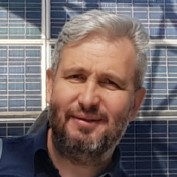Advanced Optical Methods for Materials Sciences
A special issue of Materials (ISSN 1996-1944). This special issue belongs to the section "Optical and Photonic Materials".
Deadline for manuscript submissions: closed (20 October 2022) | Viewed by 7896
Special Issue Editors
2. Doctoral School, Polytechnic University of Timisoara, 300006 Timisoara, Romania
Interests: optomechatronics; laser systems; biomedical imaging; optical coherence tomography (OCT); measuring systems; optical metrology; materials study; biomaterials characterization
Special Issues, Collections and Topics in MDPI journals
Interests: optical metrology; fibre optic sensors; ultrasonics; aerospace; NDT; SHM
Special Issues, Collections and Topics in MDPI journals
Special Issue Information
Dear Colleagues,
Materials studies benefit from a large variety of methods of investigation, including radiation-based techniques such as scanning electron microscopy (SEM), transmission electron microscopy (TEM), X-ray investigation, optical and laser scanning microscopy, speckle interferometry, shearography, spectroscopy including imaging spectroscopy, and optical coherence tomography (OCT).
The aim of this Special Issue is to provide a forum for disseminating high-impact research about the development and use of both novel and established optical systems and their methods for materials studies. Such methods include, but are not limited to, those listed above, as well as their combination with other types of investigations, including mechanical testing, analytical approaches or simulations, and finite element analysis (FEA). All domains where advances in materials are of paramount importance are considered, from mechanical to electrical and electronic engineering, as well as to optics and photonics, with applications that range from industrial to biomedical.
All types of contributions, i.e., research papers, reviews and communications, are welcome.
While this forum is open to all researchers, it also provides a selection of papers prepared for the 1st International Conference ‘Advances in 3OM: Opto-Mechatronics, Opto-Mechanics, and Optical Metrology’, Dec. 13–16, 2021 (Timisoara, Romania), organized in celebration of 100 years of the Polytechnic University of Timisoara and of the International Day of Light (IDL).
Prof. Dr. Virgil-Florin Duma
Prof. Dr. Roger M Groves
Guest Editors
Manuscript Submission Information
Manuscripts should be submitted online at www.mdpi.com by registering and logging in to this website. Once you are registered, click here to go to the submission form. Manuscripts can be submitted until the deadline. All submissions that pass pre-check are peer-reviewed. Accepted papers will be published continuously in the journal (as soon as accepted) and will be listed together on the special issue website. Research articles, review articles as well as short communications are invited. For planned papers, a title and short abstract (about 250 words) can be sent to the Editorial Office for assessment.
Submitted manuscripts should not have been published previously, nor be under consideration for publication elsewhere (except conference proceedings papers). All manuscripts are thoroughly refereed through a single-blind peer-review process. A guide for authors and other relevant information for submission of manuscripts is available on the Instructions for Authors page. Materials is an international peer-reviewed open access semimonthly journal published by MDPI.
Please visit the Instructions for Authors page before submitting a manuscript. The Article Processing Charge (APC) for publication in this open access journal is 2600 CHF (Swiss Francs). Submitted papers should be well formatted and use good English. Authors may use MDPI's English editing service prior to publication or during author revisions.
Keywords
- Materials studies
- Imaging techniques
- Optical metrology
- Speckle interferometry and shearography
- Optical coherence tomography (OCT)
- Fibre optic sensors
- Spectroscopy and imaging spectroscopy
- Confocal microscopy
- X-ray investigations
- Scanning electron microscopy (SEM)
- Numerical simulations including finite element analysis (FEA)
- Experimental studies
- Modeling of advanced materials
Benefits of Publishing in a Special Issue
- Ease of navigation: Grouping papers by topic helps scholars navigate broad scope journals more efficiently.
- Greater discoverability: Special Issues support the reach and impact of scientific research. Articles in Special Issues are more discoverable and cited more frequently.
- Expansion of research network: Special Issues facilitate connections among authors, fostering scientific collaborations.
- External promotion: Articles in Special Issues are often promoted through the journal's social media, increasing their visibility.
- Reprint: MDPI Books provides the opportunity to republish successful Special Issues in book format, both online and in print.
Further information on MDPI's Special Issue policies can be found here.







